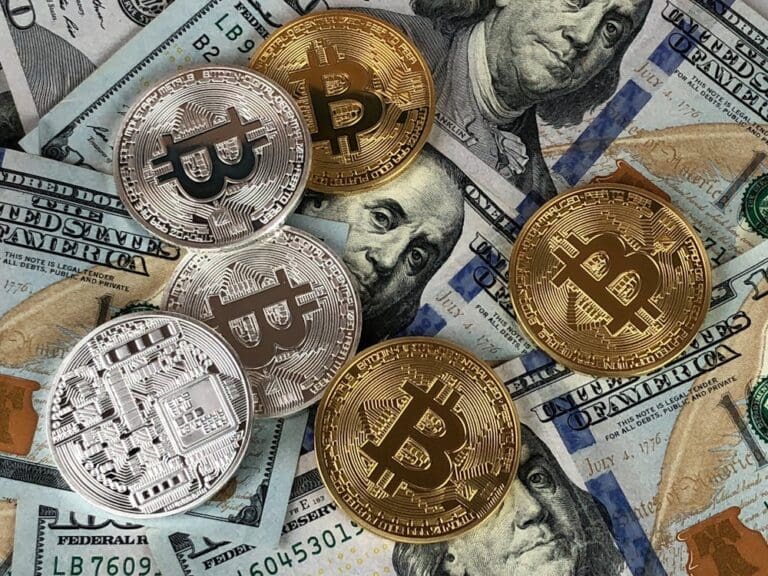Crypto News: Market Update January 2025
In January 2025, the U.S. economy was at the center of the news, with developments in inflation, interest rate policy, and crypto regulation. While inflation was higher than expected, the labor market remained strong and consumer spending robust, posing a challenge for the Federal Reserve in determining monetary policy. At the same time, the crypto sector continued to grow, with Bitcoin becoming increasingly integrated into traditional financial systems. Additionally, the Trump administration set a new course for the regulation of digital assets, which could have significant consequences for the industry. This article summarizes the key economic and financial developments of the month.
January 3: Bitcoin Turns 16: From Experiment to Mainstream Investment
Bitcoin celebrates its 16th anniversary. On January 3, 2009, the first Bitcoin block was mined by Satoshi Nakamoto, following the publication of the Bitcoin whitepaper on October 31, 2008. Since then, Bitcoin has evolved from an innovative idea into a global phenomenon that has transformed financial systems. The year 2024 was a milestone for the cryptocurrency, with a record price of $108,135 in December. This strong growth was partly driven by the approval of spot Bitcoin ETFs by the U.S. SEC and the listing of Bitcoin-related securities on the stock exchange. Bitcoin became increasingly integrated into traditional financial systems, such as pension plans, and attracted major corporations. Additionally, Bitcoin outperformed gold ETFs, with U.S. Bitcoin ETFs achieving a net inflow of $35 billion in one year—something that took gold ETFs more than five years to accomplish. Major financial institutions like BlackRock and Fidelity entered the crypto market, no longer seeing blockchain as a threat but as an opportunity. With growing acceptance and institutional investments, Bitcoin is increasingly becoming an established asset class. (Source: Yahoo Finance)
January 10: Strong Job Growth in the U.S. Reduces Chances of Interest Rate Cuts
In December, U.S. employment grew by 256,000 jobs, significantly exceeding the expected 155,000 and marking an increase compared to November. The unemployment rate slightly declined to 4.1%, while a broader measure of unemployment dropped to 7.5%, the lowest level since June 2024. Despite these strong figures, wage growth remained moderate, with an annual increase of 3.9%.
The strong labor market reduces the likelihood of interest rate cuts by the Federal Reserve, leading to a decline in stock prices and an increase in bond yields. Most of the new jobs were created in the healthcare, hospitality, and government sectors. Despite the positive jobs report, the Fed remains cautious and will await further inflation data before making policy decisions. (Source: CNBC)
January 14: U.S. Inflation Slows Further Despite Rising Producer Prices
In December, producer prices in the U.S. rose by 0.2%, lower than the expected 0.3%. This increase was primarily driven by higher goods prices, while service prices remained stable. On an annual basis, the increase was 3.3%, the highest since February 2023. Despite this slowdown in inflation, economists do not expect the Federal Reserve to implement interest rate cuts soon, due to the strong labor market and uncertainties surrounding economic policy. Financial markets reacted mixed: stocks declined, while bond yields and the dollar edged lower. Inflation remains a crucial factor for the Fed’s future interest rate policy. (Source: Reuters)
January 15: U.S. Inflation Slows Further in December, Core Inflation Drops to 3.2%
In December, the U.S. Consumer Price Index (CPI) rose by 0.4% on a monthly basis, while annual inflation reached 2.9%. Core inflation, excluding food and energy, slightly declined to 3.2%, slightly better than the expected 3.3%. The increase was largely driven by higher energy prices (+2.6%), while food prices rose by 0.3%.
Housing costs, which make up a significant portion of the CPI, increased by 4.6% year-over-year, the smallest rise since January 2022. Although inflation is declining, the Federal Reserve remains cautious and is not expected to implement interest rate cuts in the near future. Stock markets reacted positively, while bond yields declined. (Source: CNBC)
January 23: Trump Sets New Course for Crypto Regulation with Executive Order and SEC Change
On January 23, 2025, President Donald Trump signed an executive order (EO) titled “Strengthening American Leadership in Digital Financial Technology.” The EO focuses on the growth and regulation of digital assets and blockchain technology while prohibiting the introduction of a Central Bank Digital Currency (CBDC) in the U.S. Additionally, the controversial Staff Accounting Bulletin (SAB) No. 121 from the SEC was revoked, having a significant positive impact on accounting rules for crypto holdings.
The EO establishes a working group to review regulations surrounding digital assets and provide recommendations for a federal regulatory framework, including potential state reserves in crypto. However, the impact on tax regulations and reporting obligations for crypto businesses remains uncertain, particularly in relation to the alternative minimum tax and the IRS definition of cryptocurrency as property. These developments could lead to reforms at both the federal and state levels, potentially having far-reaching consequences for the industry. (Source: EY)
January 30: U.S. Economy Remains Resilient Despite Slower Growth in the Fourth Quarter
The U.S. economy grew by 2.3% in the fourth quarter of 2024, a slowdown compared to the 3.1% growth in the previous quarter. Despite this deceleration, consumer spending remained strong, increasing by 4.2%, the fastest growth in nearly two years. This was partly driven by households making large purchases in anticipation of new import tariffs under President Donald Trump’s policies.
Despite strong domestic demand, economic growth was dampened by a strike at Boeing, which undermined investments in business equipment. Additionally, inventory accumulation slowed significantly, and imports unexpectedly declined. The Federal Reserve kept its interest rate unchanged in the range of 4.25%-4.50%, and the outlook for further rate cuts remains uncertain due to the impact of the Trump administration’s new fiscal and trade measures.
Economists expect growth to slow in the second half of 2025, while inflation risks may increase. The economic balance between government stimulus measures and inflation control will be crucial in determining the direction of policy and market developments in the coming months. (Source: Reuters)
January 31: U.S. Inflation Rises in December, Fed Remains Cautious on Rate Cuts
U.S. inflation rose in December 2024, with the PCE price index increasing by 0.3% after a modest 0.1% rise in November. On an annual basis, inflation reached 2.6%, higher than the 2.4% recorded the previous month. At the same time, consumer spending remained strong, which may compel the Federal Reserve to delay interest rate cuts further.
Financial markets reacted mixed to the report. S&P 500 futures remained positive, while U.S. bond yields showed little movement. Analysts emphasize that core inflation remains relatively stable, but the Fed needs more confirmation that inflation is truly on track toward the targeted 2%.
Although inflation remains persistent in the short term, some economists expect upward pressure to ease in the coming months. As a result, the Fed could start cutting interest rates by June, but for now, a “cautious pause” remains the most likely scenario.
Conclusion
January 2025 demonstrated that the U.S. economy remains resilient, but also that inflation and monetary policy continue to influence financial markets. The Federal Reserve remains cautious about interest rate cuts, as inflation was higher than expected and consumer spending remains strong. At the same time, the crypto sector continues to grow, with Bitcoin increasingly accepted as a legitimate asset class. The Trump administration’s regulatory measures on digital assets could have significant implications for the sector and financial markets more broadly. The coming months will be crucial for the direction of both monetary policy and the further integration of digital assets into the global economy.



